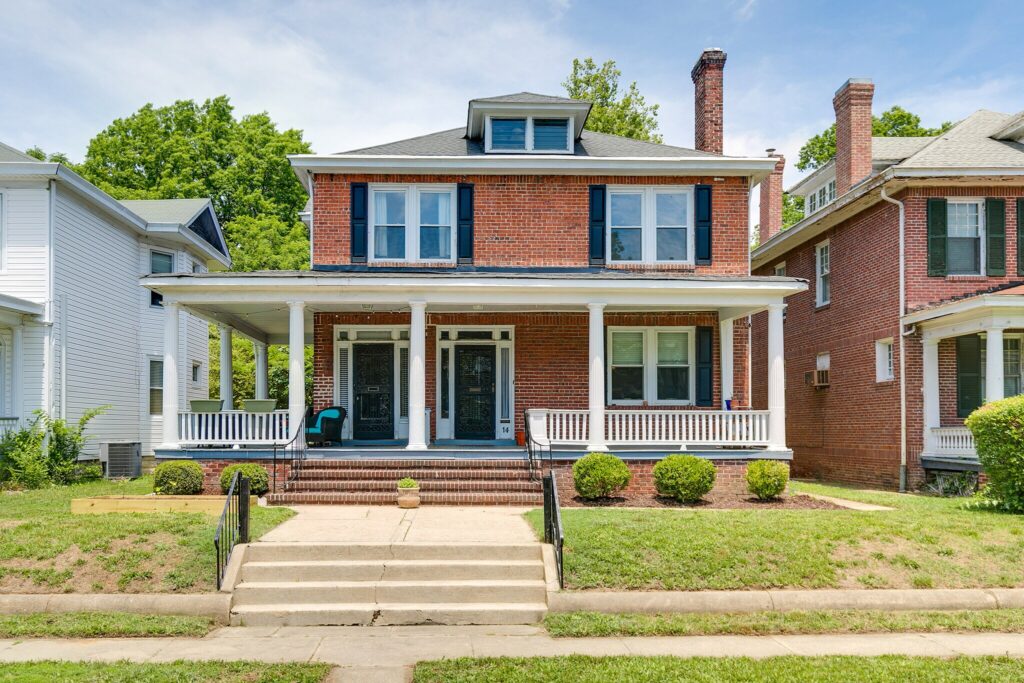Zoning and Housing Affordability
As we mentioned in the introduction to this toolkit, zoning can impact housing affordability in a variety of ways. In many contexts, single-family-only zoning districts prevent more naturally affordable types of housing, like duplexes and apartments, from being constructed at all. But there’s more to it than that.
Zoning can influence housing construction costs through development regulations.

Single-family “starter” homes, apartments, accessory dwelling units, and other types of smaller, denser housing tend to be less expensive than traditional single-family detached dwellings. Why? Mostly it’s their size. But other factors can influence the costs of these units.
For example, the cost of the land the homes sit on can influence the overall price of the homes significantly. A locality’s zoning code can dictate the size and number of homes that can be built on a certain sized lot. Typically, the larger the minimum lot size, the more expensive the housing will be, as each unit will be carrying the cost of more land with it.
If a developer wanted to build a small, four-unit apartment building and the zoning code required 2,500 square feet of land for each unit, the building would need to sit on a nearly ¼-acre lot. The cost of all that land would then be passed on to the tenants through higher rents.

Zoning codes can have a whole host of other development standards that increase the cost to build housing. For example, the zoning code might require a fully paved driveway or dedicated off-street parking. It could impose height and form restrictions or unit-per-building limits, concentrating the cost of construction into fewer rent-paying units. All these restrictions can make smaller homes and multi-family buildings virtually illegal to build by making them economically infeasible.
Single-use zoning can increase the cost of living through transportation.
Even if the zoning code allows low-cost housing types to be built, other factors affect its affordability. If the people who live there need to drive half an hour to reach jobs, schools, or grocery stores, is the housing really that affordable?

It’s been common practice for over a century to zone certain districts for commercial uses, others for industrial uses, others for residential uses, and so on. While this separation may have started as a way to protect residents by keeping noise and pollution away from homes, it has created vast distances between where people live and where they need to go. These distances can often only be traversed using a private automobile due to the lack of public transit in many places.
What’s the real cost here? The American Automobile Association estimated that in 2023, the average annual cost of owning a car in the U.S. is $12,182. Subtract that much from a household’s annual income, and many housing options that looked affordable before may now be completely out of reach. This also doesn’t factor in the time it takes to drive, walk, or ride to important destinations—after all, time is money, too.
Density and Economic Development
Not only do dense, walkable neighborhoods reduce transportation costs and increase mobility for residents—they are also a boon for economic development, especially when it comes to small businesses. In the D.C. region, the Brookings Institution ranked neighborhoods into five tiers of walkability. For each step up the scale, retail sales for a single store could increase as much as 80%. Another study by the George Washington University School of Business found that walkable neighborhoods accounted for only 0.55% of land but contained 22% of jobs in the Atlanta region. A little bit of density can have a lot of impact!
It’s not all bad—zoning can be a powerful tool for creating affordable housing, too.
We’ve seen that zoning can be exclusionary when it prevents the construction of smaller, denser, and more affordable types of housing. It tends to exclude low-income households, which tend to be households of color. But inclusionary zoning has the power to do just the opposite: create more opportunities for low-income households in places that would otherwise leave them out.
In Virginia, this is accomplished through what is called an Affordable Housing Dwelling Unit ordinance (ADU or AHDU for short). It amends the locality’s zoning code and grants incentives to housing developments that set aside a certain percentage of their units for low-income households.
These incentives usually take the form of “density bonuses,” which give the developer the right to build additional market-rate units to subsidize the cost of the income-based units. This has the added benefit of increasing housing density more generally. With well-crafted inclusionary zoning practices, a locality can encourage and increase affordable housing in their area.
Further Reading on Zoning and Housing Affordability
Want to learn more about how zoning impacts housing? Check out the following resources:
Zoning and Segregation in Virginia, Part 1 (McGuireWoods, 2021)
Zoning and Segregation in Virginia, Part 2 (McGuireWoods, 2022)
What are Zoning and Land-Use Regulations, and How Do They Affect Housing Supply? (Bipartisan Policy Center, 2022)
The Impacts of Zoning on Housing Affordability (National Bureau of Economic Research, 2002)
Zoning, Land Use Planning, and Housing Affordability (Cato Institute, 2017)
The Effect of Zoning on Housing Prices (Cato Institute, 2018)
How owner-occupancy regulations are contributing to the housing crisis (Brookings Institute, 2022)
Addressing Challenges to Affordable Housing in Land Use Law: Recognizing Affordable Housing as a Right (Harvard Law Review, 2022)
Land Use Regulation and Housing Affordability (Center for Growth and Opportunity, 2021)
Ten Actions Cities Can Take to Improve Housing Affordability (Bipartisan Policy Center, 2022)
Exploring the Current State of Knowledge on the Impact of Regulations on Housing Supply (HUDUser.gov, 2018)
Zoned Out: Building Regulations and Housing Affordability (Building the Skyline, 2018)
Urban Economics | Mercatus Center
Parking Requirement Impacts on Housing Affordability (Urbanism Next, 2020)
Minimum Requirements for Lot and Building Size (Planning Advisory Service, APA, 1952)
Do Minimum Lot Size Rules Matter? (Strong Towns, 2019)
Whatever Happened to the Starter Home? (New York Times, 2022)
Examining Entitlement in California to Inform Policy and Process: Advancing Social Equity in Housing Development Patterns (California Air Resources Board, 2021)